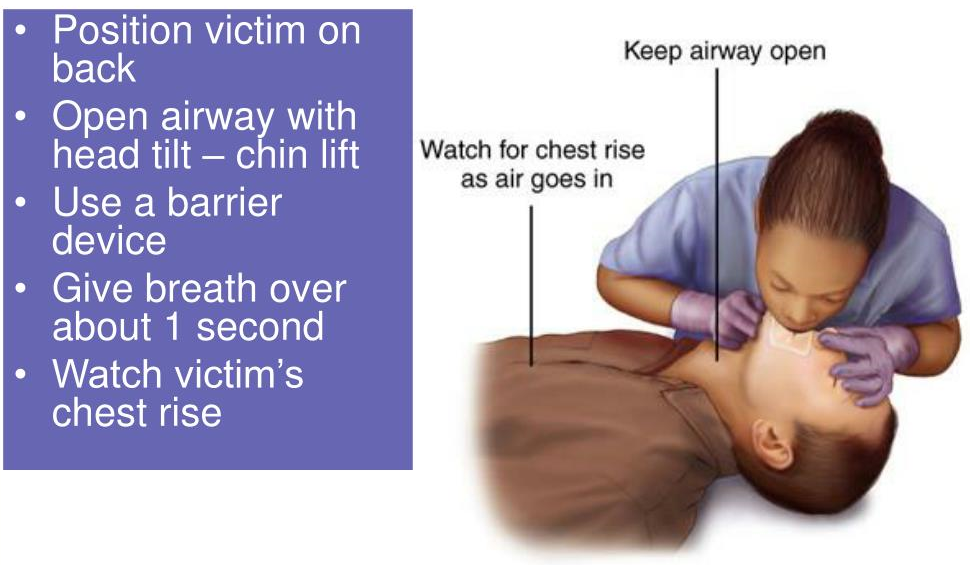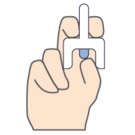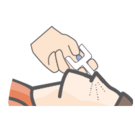Substance use and mental health resources

Click here for substance use and mental health resources provided by Alliance to Heal.
Rescuing a possible opioid overdose
When a person’s breathing is severely impaired by opioids, rescue breathing and/or chest compressions are the most important steps in preventing death. If available, naloxone (Narcan) can be used in an attempt to reverse the opioid overdose.
In an emergency, CALL 911
Rescue Breathing
When someone has very shallow and slow breathing (less than eight per minute) or has stopped breathing, rescue breathing should be performed as soon as possible. It is the quickest way to get Oxygen into a person who is not breathing adequately and can be the difference between survival and death in an opioid overdose.
If unable or unwilling to provide rescue breaths and the person is unresponsive and breathing is slow or absent, perform hands-only CPR.
To perform rescue breathing:
- Place the person on their back.
- Tilt their chin up to open the airway.
- Be sure to check for any obstructions in the person’s mouth. Objects such as gum, pills, syringe caps, and even medication patches like fentanyl can be present. Remove any potential obstructions before providing rescue breaths.
- Place a barrier device with the one-way valve over the person’s mouth. Pinch their nose with one hand, tilt their chin up with the other, and slowly provide (over about a second) two regular sized breaths. Blow enough air in to make their chest rise.
- Provide a breath every five seconds.

CPR
If the person is unresponsive and breathing is slow or absent, perform CPR. Because the patient’s condition is likely due to lack of Oxygen, it is recommended to include rescue breathing with CPR. Perform 30 compressions followed by two breaths. Keep doing this until help arrives or the person wakes up.
To perform CPR:
- Place your hands at the center of their chest
- Push hard and fast – about twice per second
- After 30 compressions, inch their nose with one hand, tilt their chin up with the other, and slowly provide (over about a second) two regular sized breaths. Blow enough air in to make their chest rise.
- Repeat 30 compressions and two breaths until help arrives or the person wakes up.
If unable or unwilling to provide rescue breaths and the person is unresponsive and breathing is slow or absent, perform hands-only CPR.
Administering Naloxone (Narcan)
Giving the person naloxone (Narcan) may reverse the effects of the opioid. It is important to note that the effects of the medication are not immediate and you may still need to provide rescue breathing and/or CPR.
For intransal naloxone:

Lay the person on their back. Tilt their head backwards, supporting their neck.

Remove the nasal spray from the box. Don’t test it.
Hold the device with your thumb under the plunger. Place your index and middle fingers on either side of the spout.

Gently insert the tip of the spout into one nostril. Your fingers should be right up against the nose.
Press firmly on the plunger with your thumb to administer the medication.
Remove the device from the nostril.
If the person wakes up:
- Lay them on their side.
- Explain what just happened.
- Explain how it’s important that they be seen by a health professional.
- Tell the person that they should not use opioids in the next few hours to avoid another overdose.
- Stay with them until paramedics arrive.

You must be logged in to post a comment.